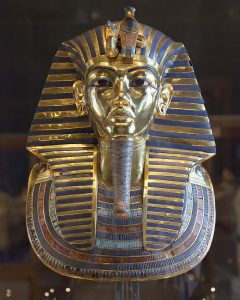The History of Piercings – Part I
Some decades ago, most people in the West thought of piercings as a classic and often discreet ear lobe or two. Perhaps we mostly tend to think of more prominent or substantial piercings, such as nose or tongue, as more recent phenomena, something that came about as a form of rebelliousness and self-expression. While the latter is, of course, also true in a way, body modifications, piercings included, have been prevalent throughout human culture for millenia. Let’s take a look at what is known about the origins of this perhaps surprisingly classic form of body art.

First evidence of lip piercing 12,000 years old
Putting sharp objects through the skin or other parts of the body for beautification or other purposes is a practice that dates back thousands of years. The oldest mummy ever discovered in Egypt had ear piercings. Ancient African civilizations had customs of piercing lips and tongue. In fact, the earliest evidence of facial piercing was discovered in 2020 in the skeleton of a man who lived about 12,000 years ago.
The bones themselves were found in Tanzania in 1913, but scientists from the University of Coimbra in Portugal have gone over it once more. They made findings which contradicted the previous suggestion of the man having had his teeth filed down. This modification practice, known as ablation, is thought to have been used to identify individuals as members of a group. However, researchers now say that the damage to the teeth was most likely inflicted by a piercing to the lip.
The piece of jewelry added to the piercing would have been at least an inch wide, the researchers said. It constitutes the earliest known form of piercing on earth. The reason behind the early piercing practice is only speculation, but most likely, it was a case of expressing social identity and belonging. This theory would be strengthened by similar finds in other skeletons from the time period.

Royal belly buttons and ear lobes
And while you may think that Christy Turlington or Britney Spears popularised the navel piercing, it was actually prevalent in ancient Egypt. The royal family would have gold rings threaded through the skin of the belly button to denote their status. Although to be fair this seems to be the only mention of that specific piercing until recent times, so maybe Turlington is due some credit after all.
Meanwhile, ear piercings have been common throughout history. Often utilised as a means of spiritual protection, people would wear metal on their ears to keep evil spirits from entering the brain via the ear canal. Ancient African tribes and Egyptians also practiced body modifications in the form of ear lobe stretching, as did people across Asia.
The practice among royals is clear on the death mask of young Egyptian pharaoh Tutankhamun, as well as on statues of the Buddha where his ear lobes reach almost to his shoulders.
Continue to follow along as we get even nerdier about the history of body modifications and poking sharp objects through skin.
